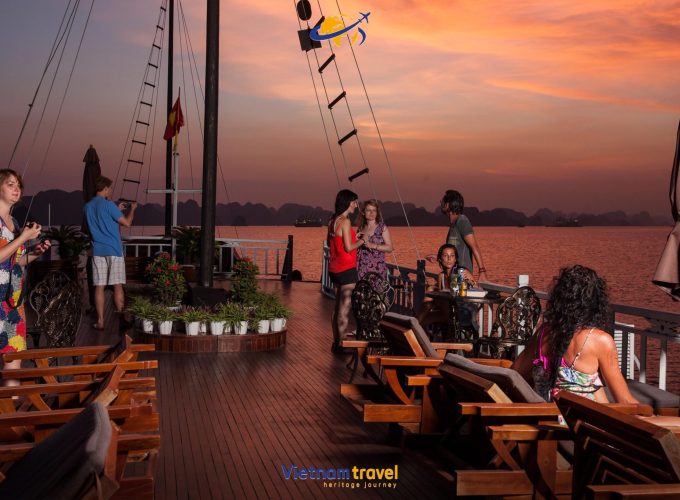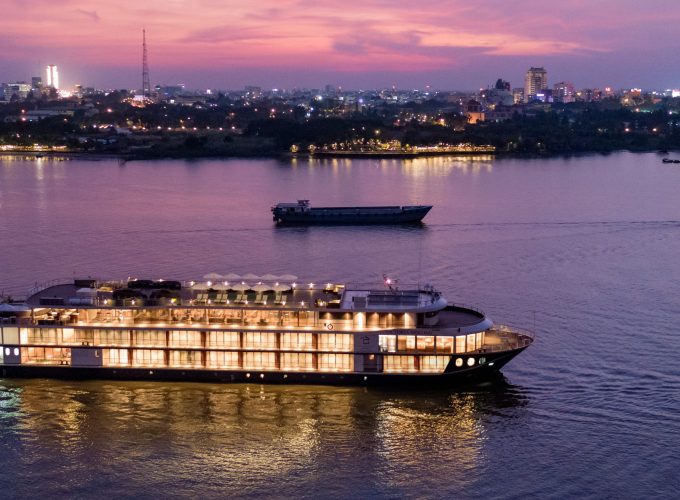Hanoi Overview

Hanoi is often known as the “Paris of the Orient ”. The word “Ha” signifies the river, while the word “Noi” indicates between. Hanoi means the city between the rivers with eighteen stunning lakes, tree-lined boulevards, and lush public parks. It used to be named as Thang Long, which means the Ascending Dragon, in 1010. The Minh Mang Emperor gave Hanoi its current name in 1831.
With a millennium of history, the Capital is one of the oldest towns in Asia. It stretches out along the banks of the Red River, where the Chuong Duong and Long Bien bridges cross. Despite more than a thousand years of turbulent history, Hanoi’s rich cultural heritage is still evident in its numerous old temples, Old and French Quarters, over 600 pagodas, and other antique buildings.
The Vietnamese capital has four distinct seasons throughout the year due to its tropical monsoon environment. Summers are hot and muggy, while winters are frigid. The average temperature is around 23.6°C which is quite pleasant. This city has a distinct charm that changes with the seasons. Therefore, tourists would want to visit this location at any time of year.
Top 5 Most Interesting Things About Hanoi
Hanoi Old Quarter With 36 Streets

The Old Quarter is the most crowded part of the city with the famous “36 streets” and each street has a certain beauty of its own. Hanoi’s 36 streets are an absolute treasure trove of the city’s rich traditions, home to more than 100 historic architectural treasures.
This fabulous area, which has a history that extends back a millennium, is highly regarded as one of Hanoi’s most iconic locations that exquisitely combines modern and ancient beauty right in the center of the country’s capital.
These thirty-six streets may appear chaotic at first glance. However, part of the Old Quarter’s beauty is its constant action. Take a seat in a cafe and watch the action from a safe distance. Bicycle merchants selling ripe fruit and fresh flowers, old acquaintances getting together for checkers, and steamy phở and bún chả cooking are all visible. You’ll be rewarded with moments at cozy coffee shops, remote pagodas, and secret passageways the longer you explore.
Make sure to stop by Hoan Kiem Lake, a charming lake that provides peace despite the busy city, while you’re exploring Hanoi’s Old Quarter. Located in the heart of Hanoi’s urban area, this is a great place to hang out all day, but especially in the early morning and late afternoon. Take a trip around the lake to see the well-known Turtle Tower, Ngọc Sơn Temple, and The Huc Bridge. Hoàn Kiếm Lake is restricted to vehicles on weekends, when locals of all ages congregate to enjoy entertainment and outdoor exercise. It’s a great place for people to watch. Bach Ma Temple, a venerable sacred temple from the feudal era, is another noteworthy location.
In addition to the Old Quarter, Hanoi has a number of other traditional craft villages that are well worth seeing, like Van Phuc Silk Village and Bat Trang Pottery Village.
Numerous Famous Historical And Cultural Sites

Hanoi has a diverse array of historical and cultural sites that showcase its incredible journey spanning over a millennium, some of which are as follows:
-
- The Temple of Literature: This is Vietnam’s earliest university which is a representation of Confucian education.
- The majestic Ho Chi Minh Mausoleum, situated in Ba Dinh Square, honoring the late national leader.
- The humble Stilt House of Ho Chi Minh, offering an insight into his austere way of living.
- Hoa Lo Prison serves as a symbol of the nation’s hardships.
- The calm Ngoc Son Temple and the graceful One Pillar Pagoda are places of spiritual comfort.
- The B52 Victory Museum displays Vietnam’s tenacity, and the Hanoi Flag Tower serves as a symbol of the country’s pride.
- The thousand-year-old Imperial Citadel of Thang Long is another location that embodies the vibrant history and culture of Hanoi.
Many Outstanding Works With French

Hanoi is a vibrant, modern city that is proud of its rich architectural history, especially the exceptional pieces that have French influences. Hanoi maintains wonderful buildings from the late 19th and early 20th centuries among the contemporary skyscrapers, including:
-
- The Long Bien Bridge is a cultural icon of the city in addition to being an amazing architectural achievement.
- Hanoi Opera House, with its roof dome, balconies, hallways, and tall windows, is modeled after a bright yellow palace.
- Hanoi’s most cherished religious landmark is St. Joseph’s Cathedral, a magnificent example of French Gothic architecture.
Other noteworthy French buildings in the Hanoi metropolitan region include the Supreme People’s Court, the State Bank of Vietnam, the Presidential Palace, and the Vietnam National Museum of History. Every one of these pieces has a unique appearance that blends well with the surroundings.
Vibrant And Diverse Food Culture
Hanoi’s 36 lively streets are home to a multitude of street eateries that perfectly represent the city’s distinct characteristics. Hanoi food is a veritable gold mine of gastronomic pleasures.
Vietnamese traditional cuisine, which is the foundation of Hanoi’s famed cuisine, is highlighted by dishes like bun cha, pho, and bun ca. These delicious delicacies are available at street restaurants that have been offering them for many years. A further element of delight is added to the dining experience by the charming and rustic atmosphere of Hanoi’s streets.
Hanoi’s culinary options are varied and remarkable, ranging from the city’s well-known egg coffee to the mouthwatering chicken noodles, bun dau mam tom, Vietnamese shrimp cake, and pho rolls. Not to mention the indulgent Trang Tien ice cream, which is rich and satisfying to the palate.
Dynamic Shopping Environment

With so many alternatives to choose from, Hanoi is a shopper’s dream come true.
Dong Xuan Market, for instance, has a large selection of products, ranging from apparel and accessories to home goods. Shoe Street in Hanoi is a shoe lover’s paradise, whereas Hang Bac Street is well-known for its silver jewelry.
Alternatively, you can go to Hang Da Market to purchase traditional Vietnamese handicrafts. For those looking for vintage and antiques, Hom Market is a great place to shop, and Hanoi Weekend Night Market has a fun atmosphere with street food and trinkets.
Don’t forget to take in the bright Quang Ba Flower Market, where you may inhale the aromas and colors of exquisite flowers. There is something in Hanoi for everyone to enjoy, whether it is modern fashion or traditional handicraft.
In short, Hanoi, the capital city of Vietnam is a well-liked travel destination for visitors from all over the world. The reasons should come from its fascinating history, priceless cultural artifacts, and mouthwatering cuisine. Besides, Hanoi captivates visitors with its distinct atmosphere and fascinating sights, showcasing a harmonious blend of classic and modern aspects.
Once you’ve learned what makes Hanoi renowned, you can start exploring other favored tourist spots in Vietnam, such as Ha Long, Nha Trang, Hoi An, Da Nang, and more. Check our list of Vietnam destinations to have everything well prepared for a wonderful trip.

































